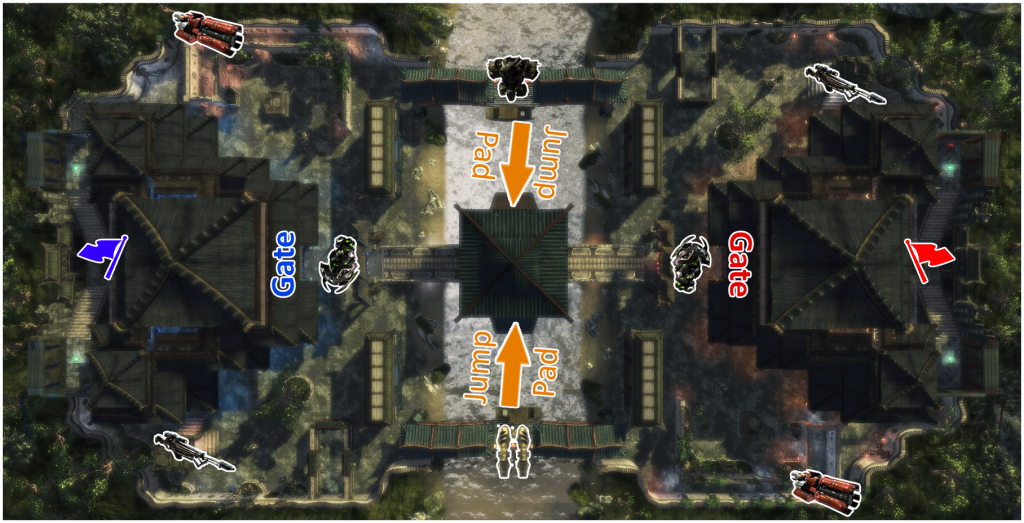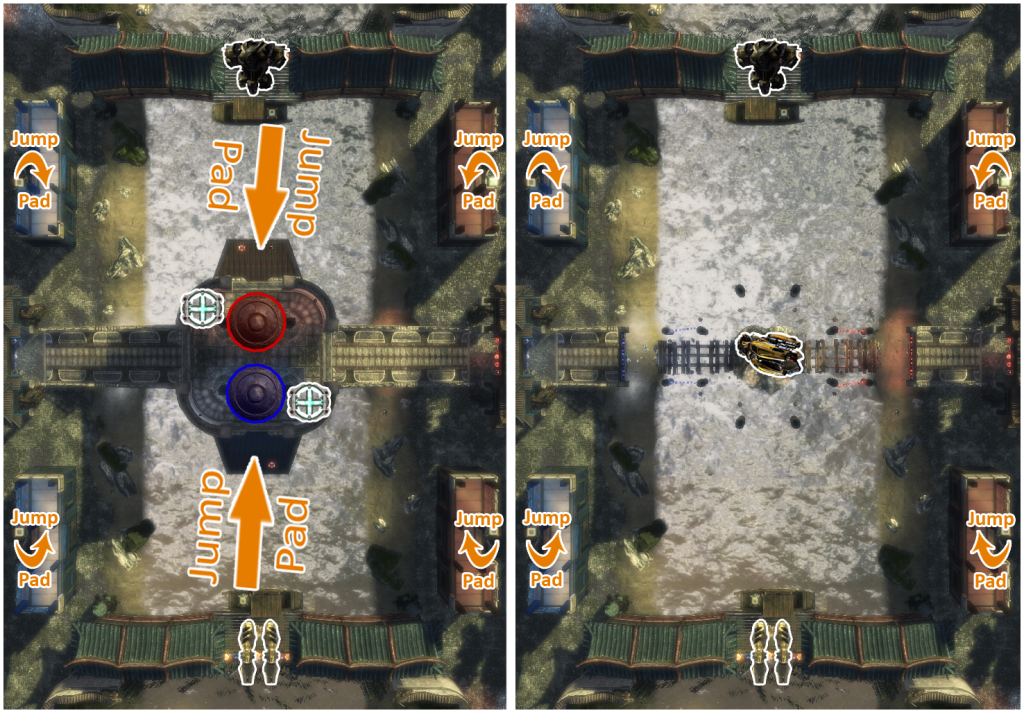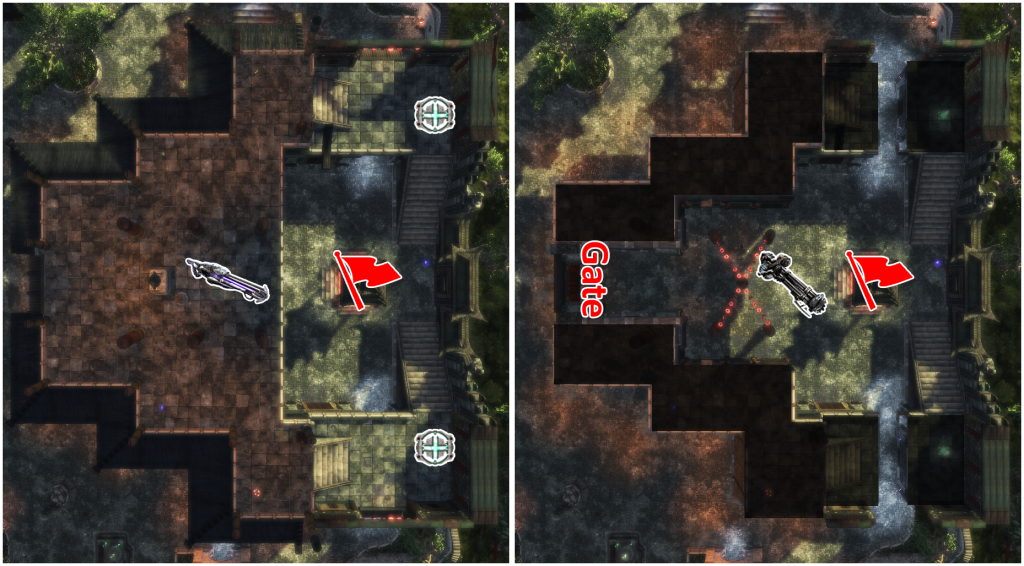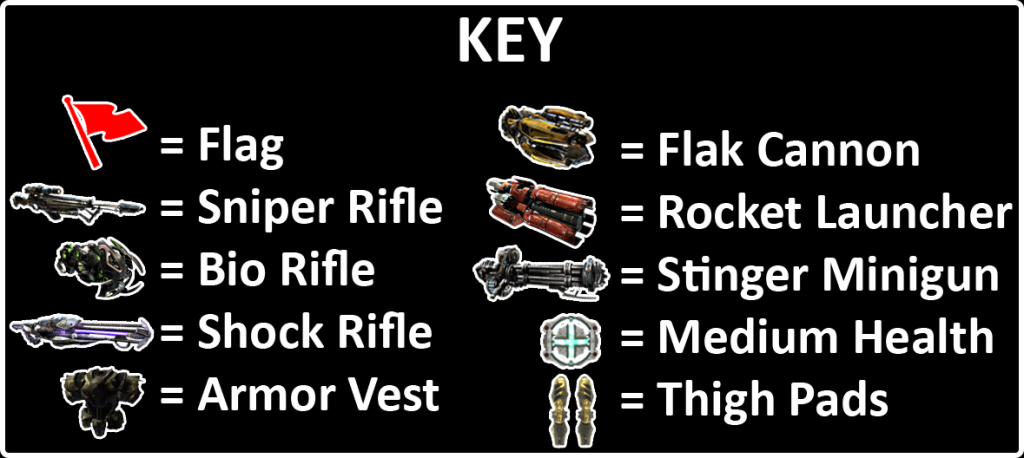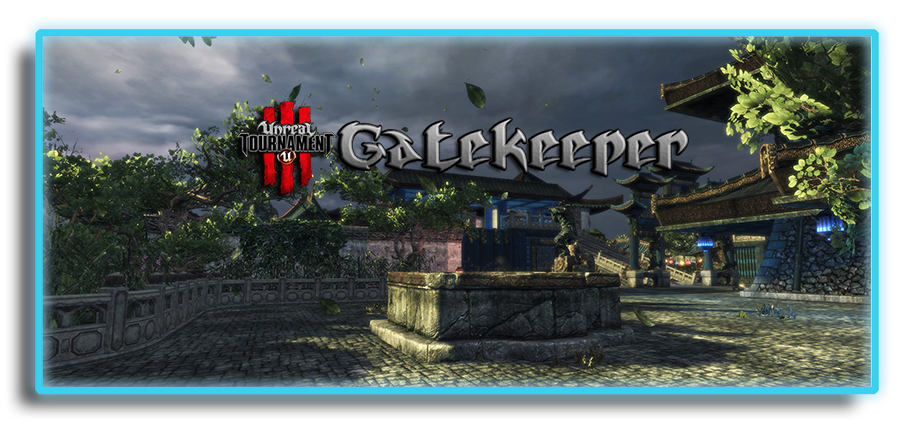
Development Info
Features
Genre: First Person Shooter
Players: 6-12
Team Size: 1
Development Time: 5 Weeks
- Two bases with multiple lanes and areas between them to suit different play styles
- A pair of gongs that can open and close the front gates to each base in the CTF version of the map
General Design
“Gatekeeper” is a 8-12 player level for Unreal Tournament III designed primarily for the Capture the Flag and Team Deatchmatch game types. The level features two bases separated by a river, with multiple bridges running across it. In the center of the main bridge, there are a pair of gongs. In the Capture the Flag version of the map, each gong can be shot to open and close the front gates to each base. This adds a unique map control element to the level and introduces new ways for players to utilize teamwork to thwart or aid flag carriers. For example, a player could shut the gate on a flag carrier’s pursuers to aid their escape, or shut it on the flag carrier themselves to trap them inside or outside a particular base.
Outdoors
Central Area
Bases (Red and Blue)
Major Design Goals
Multiplayer Lighting
In any level, lighting is very importance not only for aesthetics, but also to convey information to the player. In a multiplayer level like “Gatekeeper,” this information usually falls into one of two categories: target identification and figuring out where to go/where potential threats could be coming from. Both categories of information need to be conveyed to the player quickly, as even a fraction of a second’s worth of confusion can mean death in a multiplayer match. To address target identification, I made sure that every area in “Gatekeeper” was well lit. Taking advantage of the sunlight provided by the outdoor setting helped a lot, but it was also important to make sure there were plenty of light sources in areas that the sun did not reach.
Conveying where the player could go and where threats could be coming from required a little more finesse. Using light sources placed within the level, I was able to achieve this not only by using varying levels of brightness, but also variations in the light’s color. By alternating between contrasting orange and blue hues as seen in the above image, I was effectively able to draw a player’s attention wherever I wanted. This allowed players to quickly and easily navigate the level and assess potential threats.
Meaningful Choice in Routes and Loops
In any multiplayer level, players quickly establish a routine by following a set number of paths and loops based on their preferred style of play or the situation in the game. “Gatekeeper” was designed to give every player a path or loop that suited them. There are sniper perches and long sight lines for long range weapons, tight spaces and corners for short range weapons, and interspersed cover and room to maneuver for medium range weapons.
This is accomplished by making sure that there is a relatively isolated area surrounding each base that suits each style of combat, and at least one path across the river that does the same. Players can therefore choose to stick to a path that fits a particular style, or switch to a path that suits another style when crossing the river or nearing one of the bases. Additionally, certain areas will have different strategic advantages depending on the situation, such as in the above example. This means that players will constantly be making meaningful decisions as they move throughout the map.
An Environment Players Enjoy
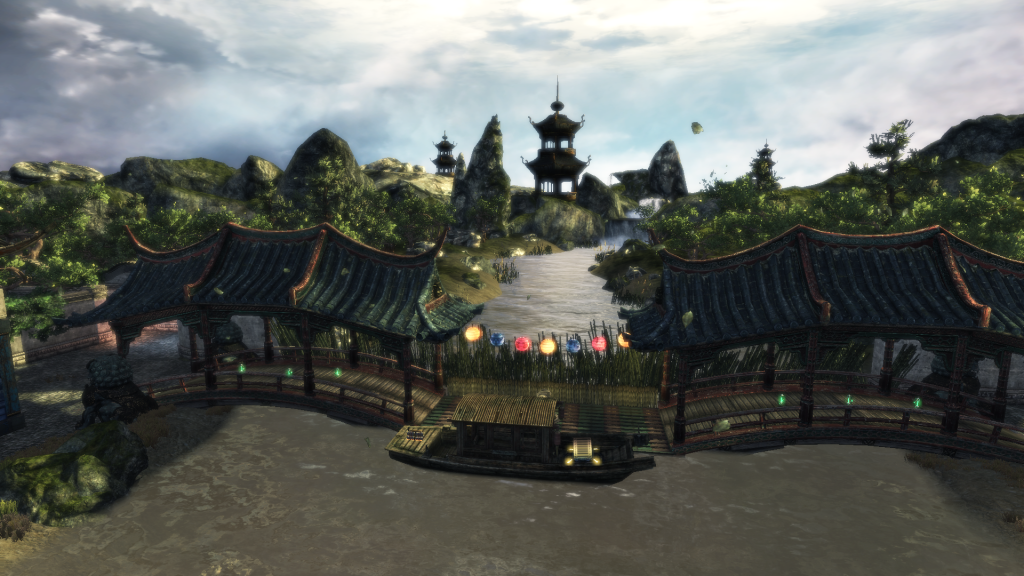
Players often spend long periods of time in multiplayer matches, and usually they prefer to spend it in areas that they find aesthetically pleasant and inviting. As such, “Gatekeeper” was constructed with the goal of creating an appealing, enjoyable environment with a bright color palette. Lush gardens, distant waterfalls and falling leaves combine with the exotic architecture and bright lighting to create a place that might be one of tranquil beauty were it not for the multiplayer mayhem taking place around it. This helps create a map that players look forward to being in, much like a real world counterpart of the location would be a nice place to visit.

